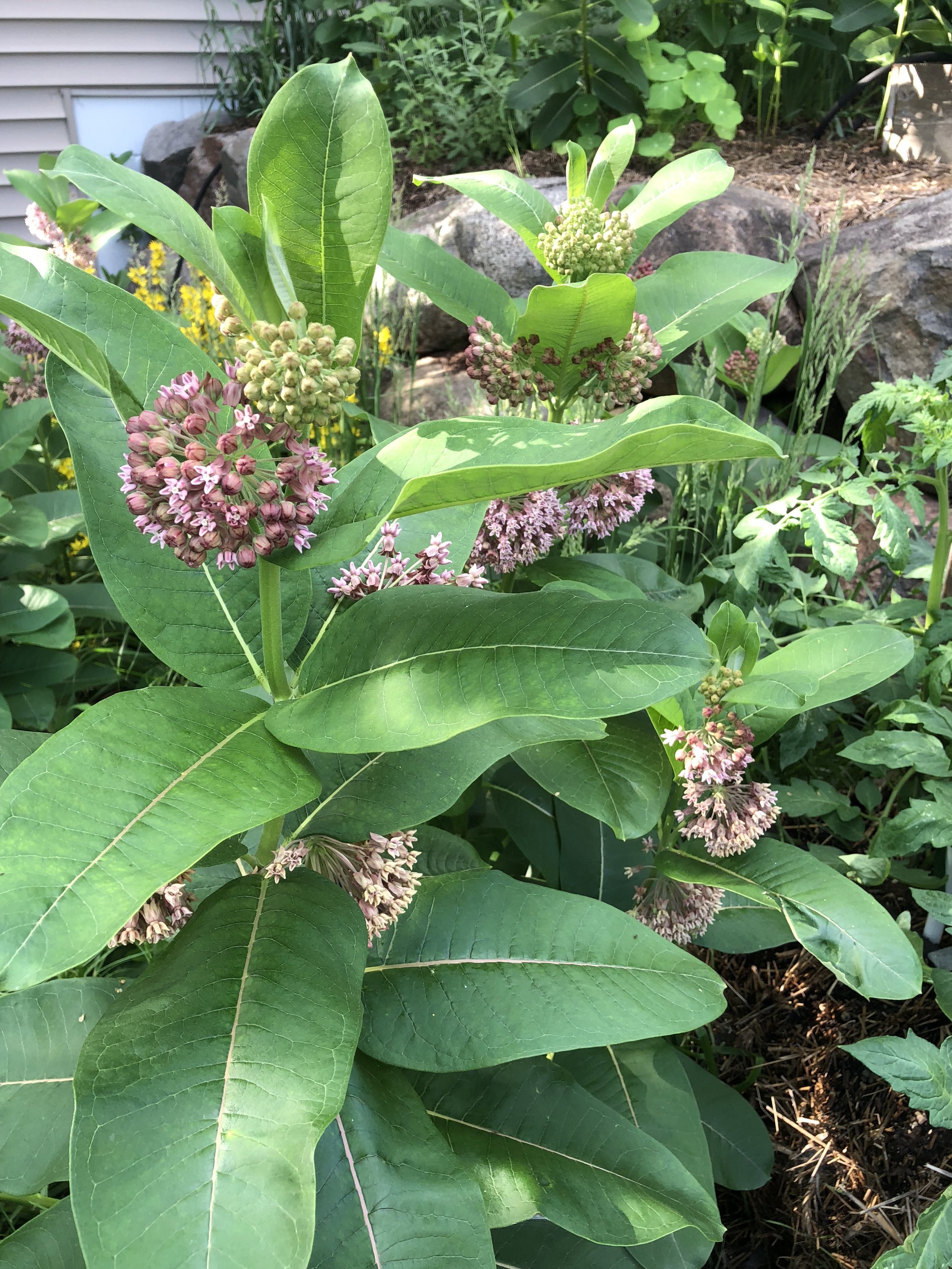Common Milkweed
Plant of the Week: June 13, 2022
Asclepias syriaca
By: Lynne Forbragd, Anoka County Master Gardener
June is the time of year when a sweet fragrance fills the air in my garden from the blossoms of the common milkweed. It brings back one of my fondest childhood memories of gathering monarch butterfly caterpillars from milkweed that grew in the ditches and pastures on the farm.
Common milkweed is a native perennial to Minnesota and grows throughout the eastern half of the United States and Canada in zones 4-9. It grows to approximately 3-4 feet tall. Allow space for milkweed to grow in an area with full sun and well-drained soil with a pH level of 4.8 to 7.2 where it can spread freely. It will grow in poor soil without any fertilizer. It will tolerate some shade but will work its way to sunnier spots. Once established, controlling it to a defined area can be challenging to remove because of its deep rhizomatic root system. It also spreads through the air from its seeds resembling little parachutes. To prevent spread throughout your yard, remove the seed pods in late summer to early fall before the pods release their seeds.
Common milkweed will attract many varieties of bees and butterflies but most importantly, the monarch butterfly. The monarch butterfly will lay its eggs on thirteen varieties of milkweed, but the common milkweed is the most popular. Therefore, milkweed is essential to help increase their population. Milkweed will attract aphids, tussock caterpillars, milkweed bug beetles, red and black milkweed beetles, spider mites, and leaf miners. Butterflies need a well-balanced ecosystem without chemicals to survive so use caution when trying to remove these predators by using integrated pest management practices. Some known diseases are leaf spot, root rot, and verticillium wilt. These fungi are often caused by overcrowding of plants and lack of good drainage.
Once you have a milkweed patch established, there’s nothing more satisfying than discovering a monarch caterpillar and watching it work through its cycle to become a butterfly. My highest count one season was seeing 16 caterpillars chomping on the milkweed at one time and 24 chrysalises hanging from plants, rocks, and siding of the house.


